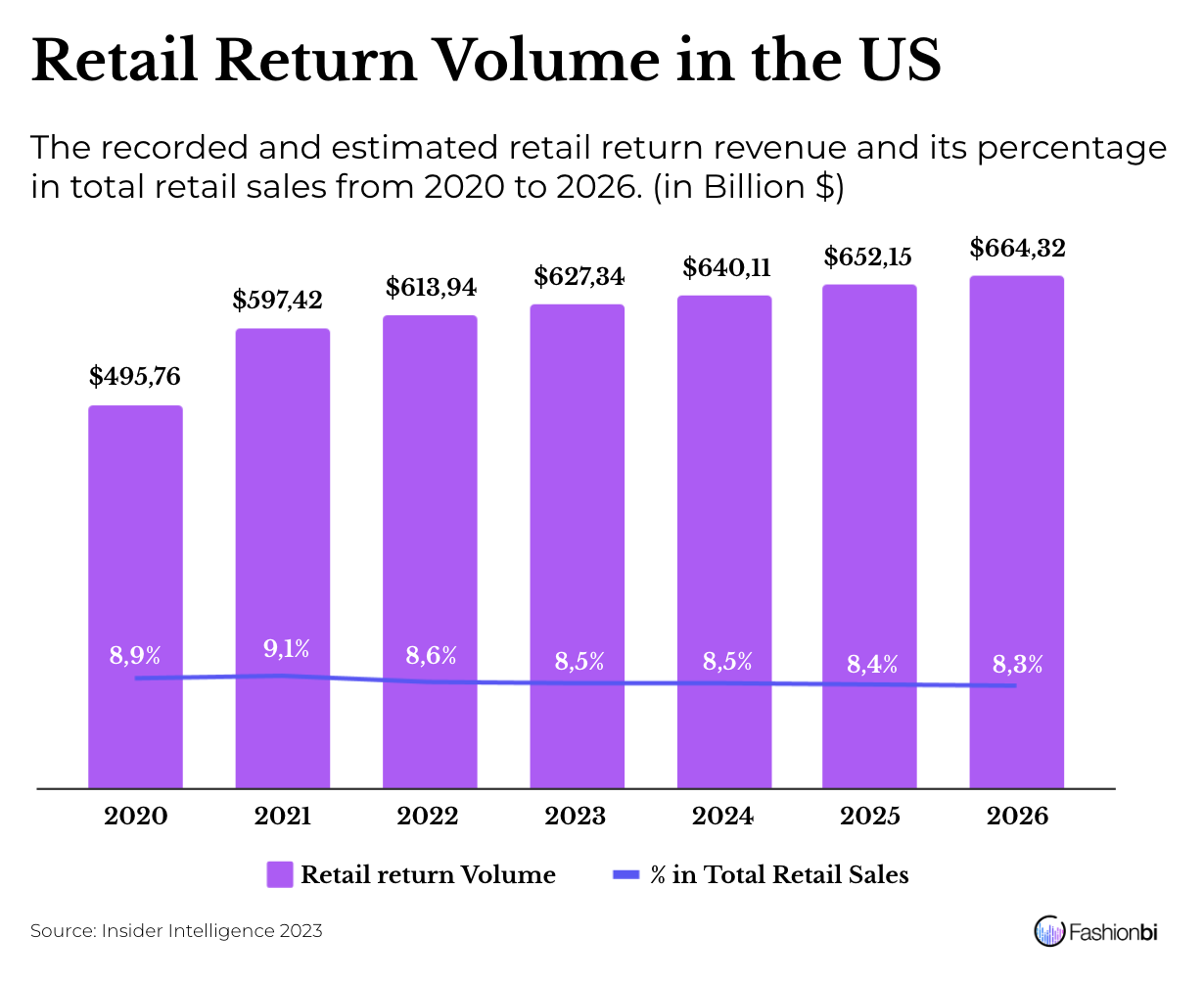Table of contents
Coming up with strategies for return management is going to be a crucial part of controlling the loss. Retailers can use this to develop business strategies such as offering discounts for returned products. A general return from the customer can cost up to $30 to the retailers in the US.

As many of the returns are not charged to the customers, these losses are faced by the retailers. This has also led to an increase in return volumes, a souring in prices, and climate concerns. Here are the retail strategies that can be used in product return management.
Return Fraud
Out of the returned retail sales of $212 billion, the retailers face a loss of $22,8 billion (equal to 10,7%) due to return frauds. When it comes to in-store returns, out of the estimated total return sales, around 12,7% of them are forecasted to be fraudulent. Additionally, the in-store return frauds are expected to be 48% higher than the location with no-store return frauds. The only season where the retailers can avoid this issue is on the holidays in which most of the retailers offer returnless policies to save their margins.
They would witness the customers who return often, also known as serial returners. Tracking out the customers is an ideal plan to avoid return fraud. Retailers can incorporate machine learning, AI, and digital analytics for this. Always have an eye on social media as the youth generation is visiting TikTok to learn how to commit this fraud. Many buy the products, relabel them with higher prices, and return them.
India’s Myntra collaborated with Google with the help of a machine-learning platform that runs the data of shoppers’ product views, likes and dislikes, and many more to come up with an approximate customer return that can be expected before the customer purchases something. Bloomreach has the technology to track out the serial returners and hinder them from getting deals and discounts.
Accountable to the Ecosystem
The retailers (and customers) have to think about the environmental impact they cause when a return is made. Adopting a sustainable cost-benefiting strategy for this issue is important. Incorporating the same sustainable last-mile transportation for the returns and discouraging the shoppers from returning by establishing zero-tolerance policies by blocking serial returners and charging fees are other viable options.
The retailers have to design a platform that allows the consumers to buy only what they want and they have to keep what they buy. In order to achieve this, they have to be transparent in sizing, colours, and other details of the products. They have to pressure the customers to recheck the product before ordering.
Amazon is flagging the products that are returned several times as “frequently returned products” and encourages customers to double-check their products. Dress the Population, an online retailer, provides discounts from 10% to 70% for shoppers who agree to a non-returning policy. With this, it has reported a decrease in the average return rate between 55% and 7%. Zara is charging its customers $3,95 for every return online.
Instead of getting rid of the returned items, the brands and retailers can work on refurbishing them to sell again. A standalone store or department to sell unwanted and returned items that are reworked can be an additional business and a sustainable plan. Ganni partnered with a repair tailoring service in the UK named SOJO to decrease its wastage of returned goods. It offers its customers an alternate service of alteration via its website. Once the service is booked, SOJO will take care of the pickup and return with no extra charges.
Return Experience
According to The 360 Blog, around 83% of the buyers will research the brands’ or retailers’ return policy before purchasing a product, over 81% of customers agree to not buy from the retailer or brand when the return experience is bad and 78% of them will leave their shopping cart/bag if the free return is not a part of their purchase. Moreover, 30% of the shoppers prefer a money refund instead of getting a store credit.
Therefore, both brands and retailers need to take this as seriously as possible and offer a seamless return experience. The experience with flexible and easy characteristics will drive customer loyalty. The retailers can encourage the customers to return in-store to reduce the return cost by 15-20% and also to offer other preferences for them. They have to dedicate an entire department for the return management that can invest and analyse a reverse logistics system. Partnering with a third-party service provider can be useful for retailers and brands.
Zalando GmbH is streamlining its logistic operations in reverse to segregate its bulk items. The returned products are being divided and analysed instead of shipping directly to the next customers. Target offered its customers a return window on its selected stores without any charges in June 2023.
The retailers can make a business out of this. For instance, H&M requested a fee of £2 for customers who don't have membership to return their products. Mytheresa selects shoppers who shop more and return less on their platform and offers them better options to return their products.
Around 83% of US shoppers are indicating that they would rather go with an exchange than return if they are provided with an incentive of $10 to shop. Turkish label Bocan Couture gives free shipment but encourages its customers to exchange instead of refund.
Cover Image: Article on Returns Management Process, courtesy DCL Logistics.